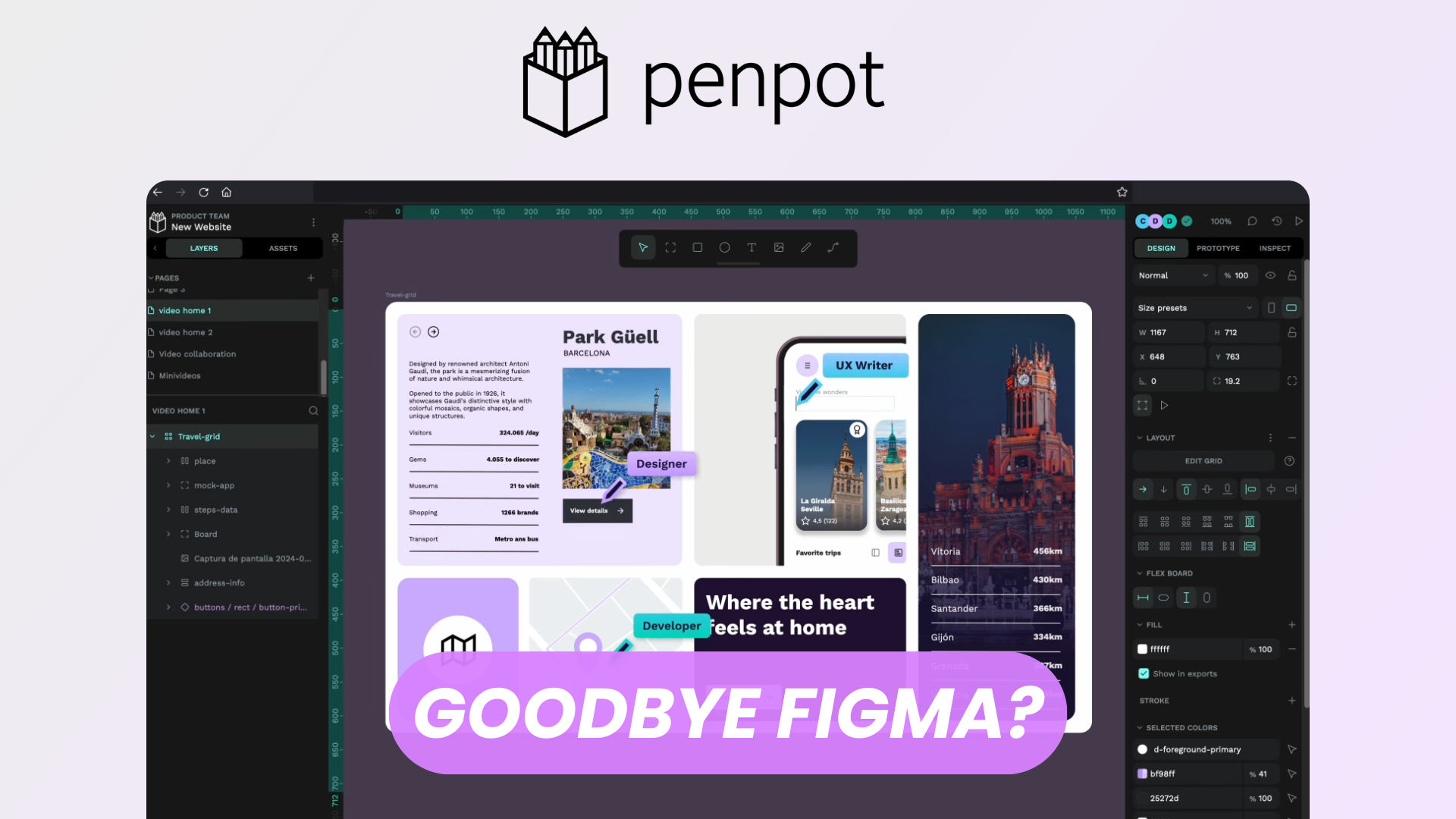Penpot: Free Open Source Design Tool

Design collaboration has long been dominated by proprietary tools like Figma, Sketch, or Adobe XD — but now, Penpot is changing the game. As a free and open-source design and prototyping platform, Penpot empowers designers, developers, and product teams to work together seamlessly, without being locked into closed ecosystems.
Built with web technologies and accessible directly from the browser, Penpot offers all the modern design features you’d expect, with full transparency and self-hosting options for organizations that value privacy and control.
Watch our dedicated platform overview
Templates & Import
Penpot provides an ever-growing library of community templates to help teams jumpstart projects — from UI kits and mobile layouts to wireframing components. You can also import files from other tools like Figma or SVG editors, ensuring an easy transition for teams already invested in existing workflows.
This flexibility makes Penpot ideal for both starting from scratch or adapting existing visual assets to a collaborative open platform.
Getting Started Tutorial Project
For newcomers, Penpot offers a guided tutorial project right within the app. It walks you through the basics — creating frames, drawing shapes, managing typography, and linking elements for prototypes.
This tutorial gives you a hands-on introduction to Penpot’s interface and features, helping you understand how to structure your designs and collaborate effectively before diving into real-world work.
Design System Components
At the heart of professional design work lies consistency — and Penpot delivers that with its Design System Components.
You can create reusable components for buttons, cards, navigation bars, or entire page sections, and define properties like colors, text styles, and spacing once, then apply them across your designs.
Changes made to a master component propagate throughout your project automatically, ensuring visual harmony and drastically reducing repetitive work.
Variant Feature
Penpot’s Variant feature takes component reuse even further. Variants allow you to define multiple states or versions of a component — for example, buttons with hover, pressed, or disabled states — all grouped under a single parent component.
Designers can then easily toggle between these states when building interfaces, simplifying complex UI scenarios and making the design system both flexible and scalable.
Tokens Feature
The Design Tokens feature bridges the gap between designers and developers. Tokens define reusable values such as colors, typography, spacing, and corner radius, which can be exported as code.
This allows for automatic synchronization between design and front-end styles, ensuring that your brand identity and interface details stay consistent from mockup to production code.
History Versioning Feature
Mistakes happen — and that’s where Penpot’s version history comes in.
Every change you make in a project is recorded, letting you browse, compare, and restore previous versions with ease. This is especially useful for teams working collaboratively, where design directions evolve frequently, and reverting to an earlier iteration might save hours of rework.
Icons & Planning Templates
Penpot isn’t just for designing app interfaces — it also includes ready-to-use icon libraries and planning templates that streamline early-stage design thinking.
You can sketch user flows, wireframes, or information architecture directly in Penpot, all within the same collaborative space. This reduces the need to juggle multiple tools for early ideation and detailed design phases.
App Prototyping
Like leading design tools, Penpot supports interactive prototyping.
Designers can link screens, define transitions, and simulate navigation flows to test usability before development begins. The prototype can be previewed directly in the browser or shared with stakeholders for feedback — no extra plugins or software required.
Free Developer Mode
One of Penpot’s standout advantages is its Developer Mode, which is completely free.
Developers can inspect layers, view measurements, and get ready-to-use html/css code to speed up handoff. Unlike many commercial tools that restrict these features behind paywalls, Penpot ensures that design-to-code collaboration remains open and accessible to everyone.
Teams
Penpot was built with collaboration in mind.
You can create teams, share projects, manage permissions, and co-edit designs in real-time — whether your teammates are designers, developers, or product owners. The web-based interface makes remote collaboration effortless, and self-hosting options ensure data stays under your organization’s control if needed.
Conclusion
Penpot stands as a powerful, community-driven alternative to commercial design platforms. With its open-source foundation, it offers flexibility, transparency, and independence — while still matching modern design tools in usability and features.
Whether you’re a solo designer, part of a startup, or managing enterprise-level workflows, Penpot’s blend of openness and functionality makes it one of the most promising design tools of the decade.
Deploy your Penpot instance with Elestio and experience the future of collaborative open-source design.
